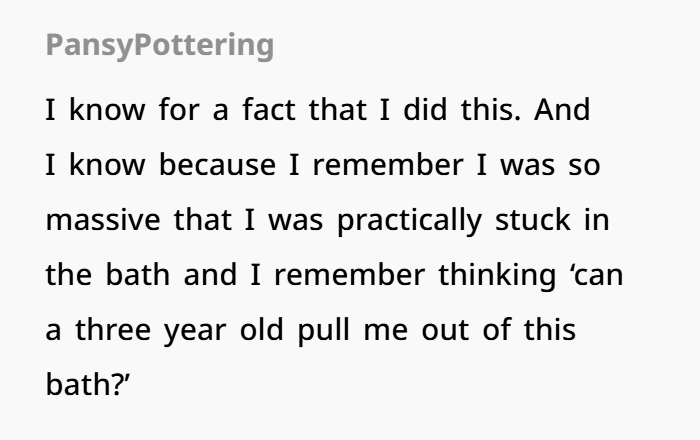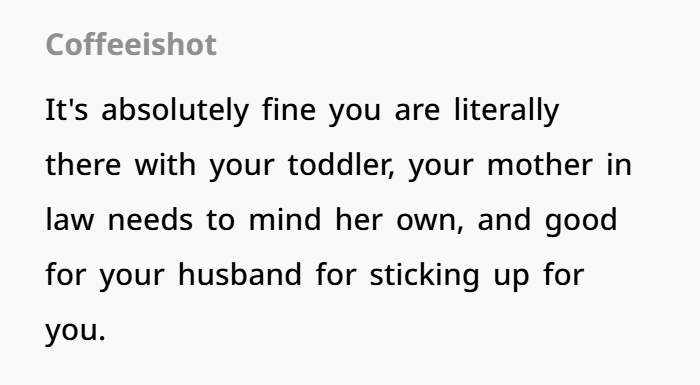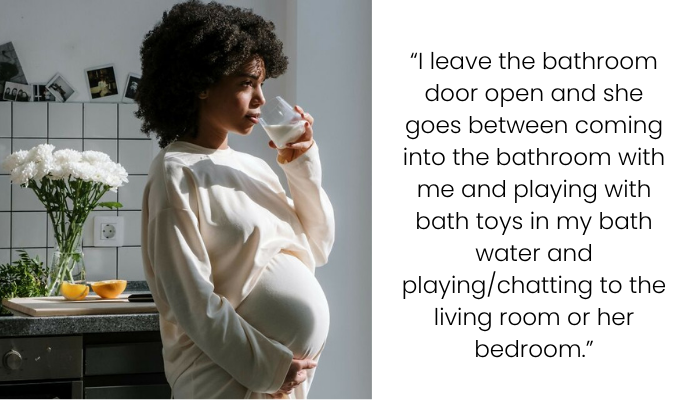Navigating Parental Self-Care: Assessing Safety in Solo Toddler Supervision
A 25-year-old expectant mother, grappling with severe sciatica and Symphysis Pubis Dysfunction (SPD), finds solace in midday baths to alleviate her discomfort. During these 30-minute sessions, her 2-year-old daughter remains within the confines of their childproofed flat, oscillating between the living room and her bedroom, occasionally joining her mother in the bathroom. Despite implementing safety measures—such as securing cabinets, locking the front door, and ensuring hazardous items are out of reach—the mother’s mother-in-law (MIL) labeled this routine as neglectful, sparking a familial dispute and prompting the mother to question her parenting choices.
This scenario underscores the delicate balance parents must strike between attending to their well-being and ensuring their children’s safety. It raises pertinent questions about the boundaries of acceptable supervision and the societal expectations placed upon caregivers, especially those managing health challenges during pregnancy.
Mothers-in-law can be an overbearing handful, as this woman found out the hard way

Heavily pregnant and mother to a toddler, she takes a quick bath when her sciatica becomes too much to bear
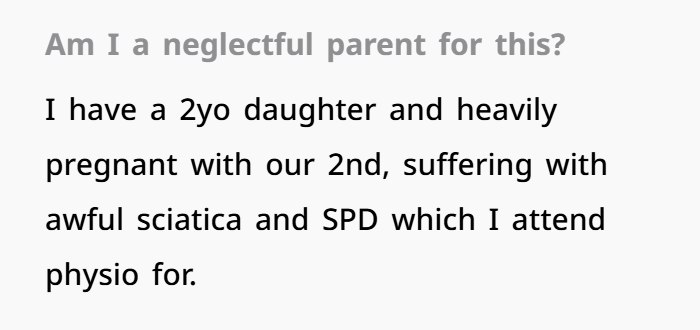
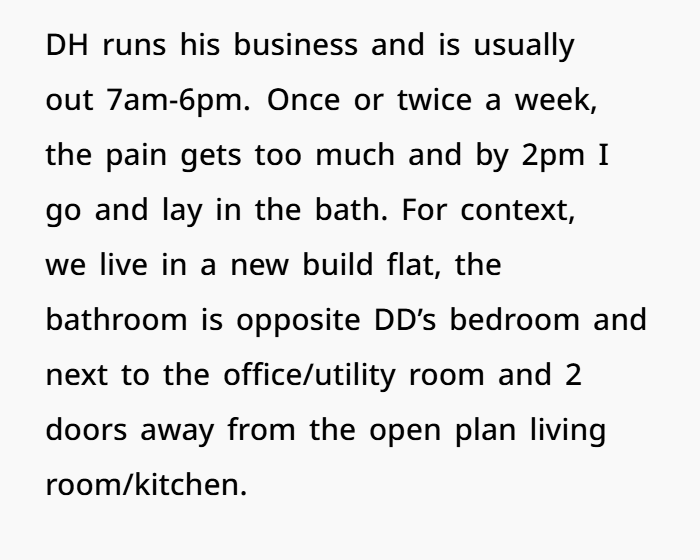
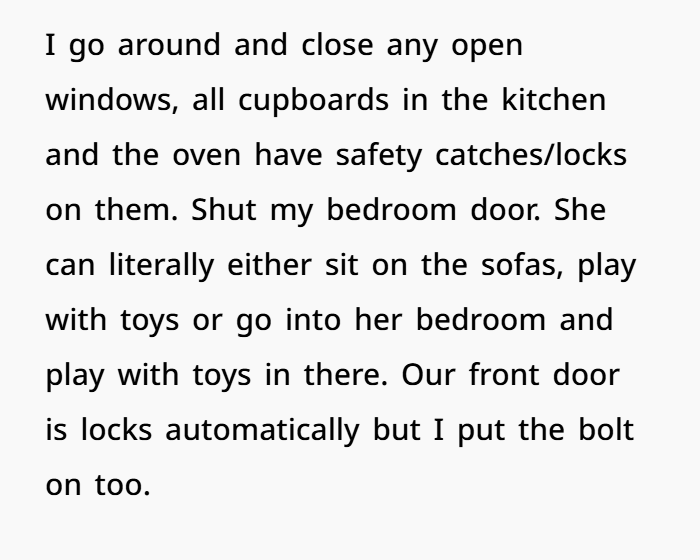
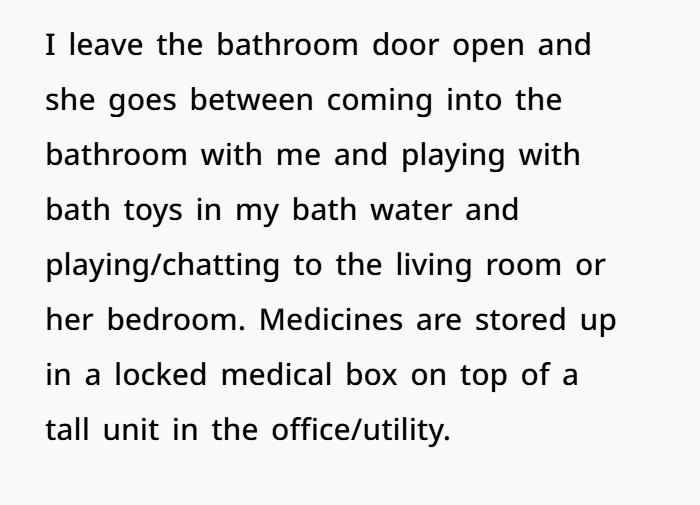
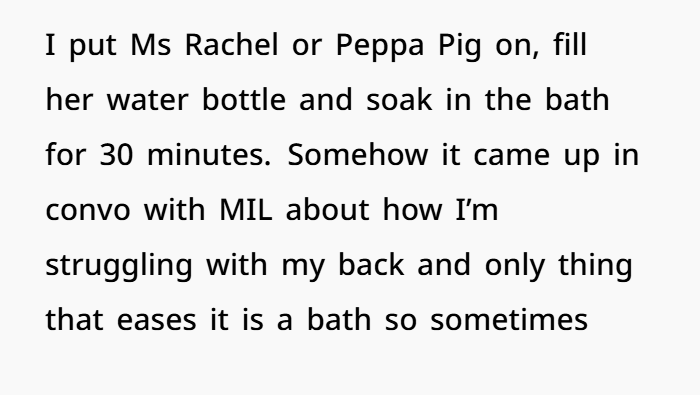




The core concern revolves around the safety implications of briefly leaving a toddler unsupervised, even within a secured environment. While there’s no universally mandated legal age for leaving children alone, guidelines emphasize assessing the child’s maturity, the duration of absence, and the safety of the environment.
In this case, the mother has taken proactive steps to mitigate potential risks: installing safety locks, securing hazardous materials, and maintaining open communication with her child. The proximity of the bathroom to the child’s play areas further reduces the risk, allowing for auditory monitoring.
However, it’s essential to recognize that toddlers are inherently curious and can encounter unforeseen dangers swiftly. Organizations like the CDC advocate for constant supervision of young children, emphasizing that even short lapses can lead to accidents.

Balancing self-care and child supervision is a nuanced challenge. Parents facing health issues, like the mother in this scenario, must navigate their needs without compromising their child’s safety. Engaging in open dialogues with family members, seeking support, and consulting pediatric guidelines can aid in making informed decisions that prioritize both parental well-being and child safety.
In the comments, readers agreed the original poster’s mom should be offering to help out rather than telling tales and told her she wasn’t being unreasonable at all



